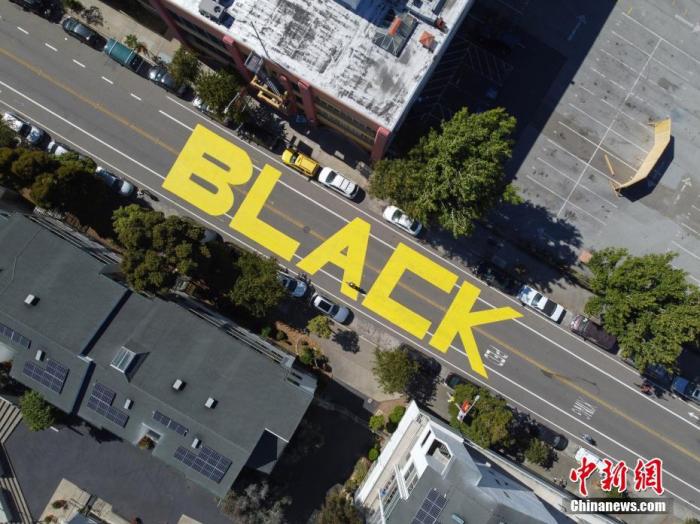China News Service, July 5 (Xinhua News Agency) reported on the 4th that the gap between the unemployment rate of African Americans and whites in June hit a new high in five years. This data underscores that the initial recovery in employment opportunities has not been equal after the historic unemployment wave triggered by the new crown epidemic.
Data map: On June 13, local time, on the street near San Francisco City Hall in the United States, a huge "Black Lives Matter" (written by black paint) appeared in yellow paint. China News Service reporter Liu Guanguan
According to reports, although the unemployment rate of both African-Americans and whites fell in June, the decline in white unemployment was even greater. According to data released by the US Department of Labor on the 2nd, the unemployment rate of whites decreased by 2.3 percentage points, from the original 12.4% to 10.1%; African Americans fell by 1.4 percentage points, from the original 16.8% to 15.4%.
The gap between the unemployment rates of the two parties reached 5.3 percentage points, the highest since May 2015. At the critical moment of current ethnic relations in the United States, this gap exposes important economic factors of racial inequality. George Floyd, an African-American man, was killed by a white policeman's knee in May, and triggered demonstrations across the country.
Valerie Wilson, director of the Economic Policy Research Institute (EPI), said: "Unfortunately, this is consistent with the patterns we have observed in this country over the past few decades."
The previous economic expansion of the United States set a record, creating better job opportunities for African-American workers and other minority groups, but all this came to an abrupt end with the new crown epidemic. Women and people of color are the hardest hit by unemployment.
Wilson said that with the slow recovery of the labor market, African-American workers seem to be the last group of people to benefit, repeating the pattern that usually appears after the recession.
Wilson said that the unemployment rate of African-American men rose to 16.3% from 15.5% in May, the highest level since autumn 2011, but the labor force participation rate of African-American men increased in June. This indication shows that the number of men trying to find a job has increased, but they cannot find new jobs.
The decline in the overall unemployment rate of African Americans in June was driven by women, perhaps because employers sought them to return to work in reopened bars, restaurants and retail stores, reversing some of the unemployment situation in March and April. The unemployment rate of African-American women fell to 14% in June from 16.5% in May.

